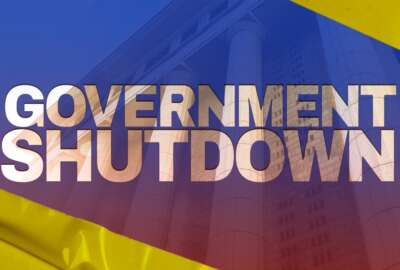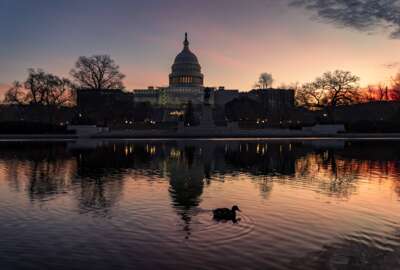Editor’s Note: This story was updated Thursday morning with details on the House’s new tentative continuing resolution.
Agencies are bracing for a possible partial government shutdown at the end of this week — and many federal employees are wondering what their status will be should Congress fail to meet its deadline.
This week, Congress is running up against a March 1 deadline for four appropriations bills:
- Agriculture, Rural Development, Food and Drug Administration and Related Agencies Appropriations Act
- Energy and Water Development and Related Agencies Appropriations Act
- Military Construction, Veterans Affairs and Related Agencies Appropriations Act
- Transportation, Housing and Urban Development and Related Agencies Appropriations Act
Congress appears ready to once again punt the deadline and try to avoid a lapse in government funding. A new tentative continuing resolution, introduced in the House Wednesday evening, would push the deadlines for these appropriations bills and others to March 8 and March 22, respectively.
If Congress doesn’t reach an agreement by the end of Friday, agencies whose funding falls under these four bills will see a lapse in appropriations. During a government shutdown, agencies must categorize their employees to determine whether they’ll continue to work — and whether they’ll continue to get paid.
If a partial shutdown occurs this week, at least 158,000 federal employees will face furloughs, according to Federal News Network’s calculations. During a shutdown, furloughed employees have to stop working, and don’t get paid until the shutdown ends.
Federal News Network arrived at that estimate via our ongoing tally of how many federal employees at the affected agencies would be either “exempt” or “excepted.” Our regularly-updated dataset is drawn from the contingency plans agencies submit to the Office of Management and Budget. The remaining employees who don’t fall into the “exempt” or “excepted” categories would be furloughed.
The estimate is imperfect, and more complicated than meets the eye. That’s because the individual Congressional appropriations bills don’t always line up exactly along federal department boundaries. That’s that case, for example, with the U.S. Department of Agriculture: the Agriculture funding bill that’s set to lapse this week funds most of USDA, but not the more than 30,000 employees at the U.S. Forest Service. That agency happens to be funded by the Interior and Environment appropriation, so none of its employees would be affected by this particular partial shutdown.
Likewise, the Department of Energy is partially funded through the Energy and Water Development bill. But some of Energy’s employees are separately funded through the Defense appropriations bill, which has a later deadline in Congress.
As another example, the Military Construction and Veterans Affairs bill would affect the Department of Veterans Affairs’ funding if Congress cannot reach an agreement. But as Federal News Network has shown, most employees at the Veterans Health Administration are considered “exempt” and therefore would continue working while still getting paid.
Our total attempts to account for all of those caveats, but it’s still just an estimate of how many federal employees may be furloughed if funding from the four appropriations bills were to lapse Friday.
The three categories during a shutdown
Federal employees who are considered either “exempt” or “excepted” fall into separate categories than those who get furloughed during a shutdown.
“Excepted” employees continue to work without pay during a shutdown. Although their salaries are funded through annual appropriations, they must stay on the job even with no funds available to pay them. These employees are guaranteed back pay once a shutdown ends.
“Exempt” employees work in positions that are financed through a funding source other than annual appropriations. That means a lapse in appropriations does not affect this group of employees, unless the alternate funding eventually runs out.
Furloughed employees during a government shutdown must stop working, and do not get paid until the shutdown ends.
According to Federal News Network’s calculations, more than 1.5 million feds would be considered either “exempt” or “excepted” from shutdown furloughs. That means roughly 65% of the overall federal civilian workforce would continue working through a full government shutdown, either with or without pay.
The Government Employee Fair Treatment Act, which former President Donald Trump signed into law in 2019, covers both furloughed and excepted federal employees. It ensures they’ll receive retroactive pay during lapses in appropriations once a shutdown ends.
Federal News Network’s Jared Serbu contributed to this report.
Copyright
© 2024 Federal News Network. All rights reserved. This website is not intended for users located within the European Economic Area.





